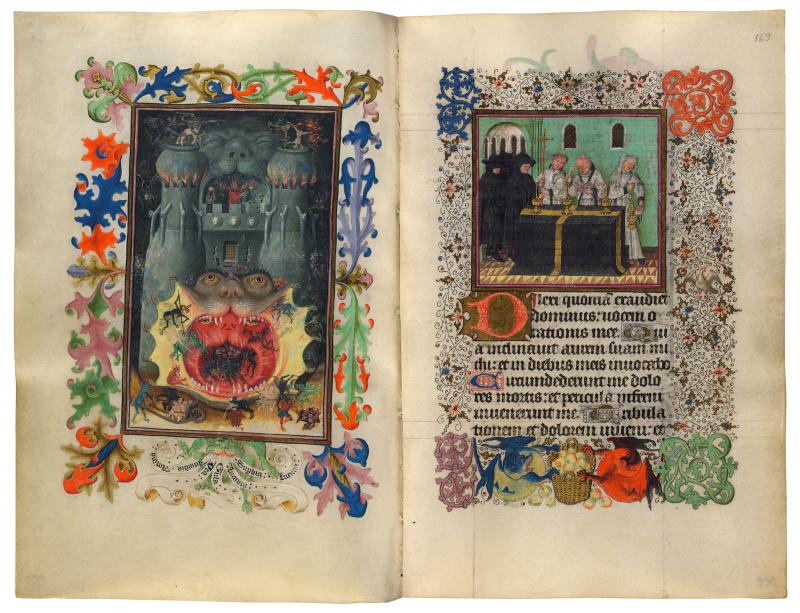
Mouth of Hell
Final Absolution
Purchased on the Belle da Costa Greene Fund with the assistance of the Fellows and with special assistance of Mrs. Frederick B. Adams, Sr., Mrs. Robert Charles, Mr. Laurens M. Hamilton, The Heineman Foundation, Mrs. Donald F. Hyde, Mrs. Jacob M. Kaplan
There is no more inventive—or scary—miniature in Catherine's prayer book than this full-page depiction of hell. A gaping lion's mouth opens its batlike lips tipped with talons; inside is another, red-hot maw. Demons cast damned souls into this terrifying entrance to the furnace of hell, above which rises the castle of death decorated with skulls. Burning towers heat caldrons into which mutilated souls are pitched. A third mouth forms the domed roof. At the bottom crouches a green demon whose mouth sprouts scrolls inscribed with the Seven Deadly Sins. In the smaller miniature, the holy water and incense offered by the priest to a corpse seem like scant protection for the potential horrors depicted in the facing image.
